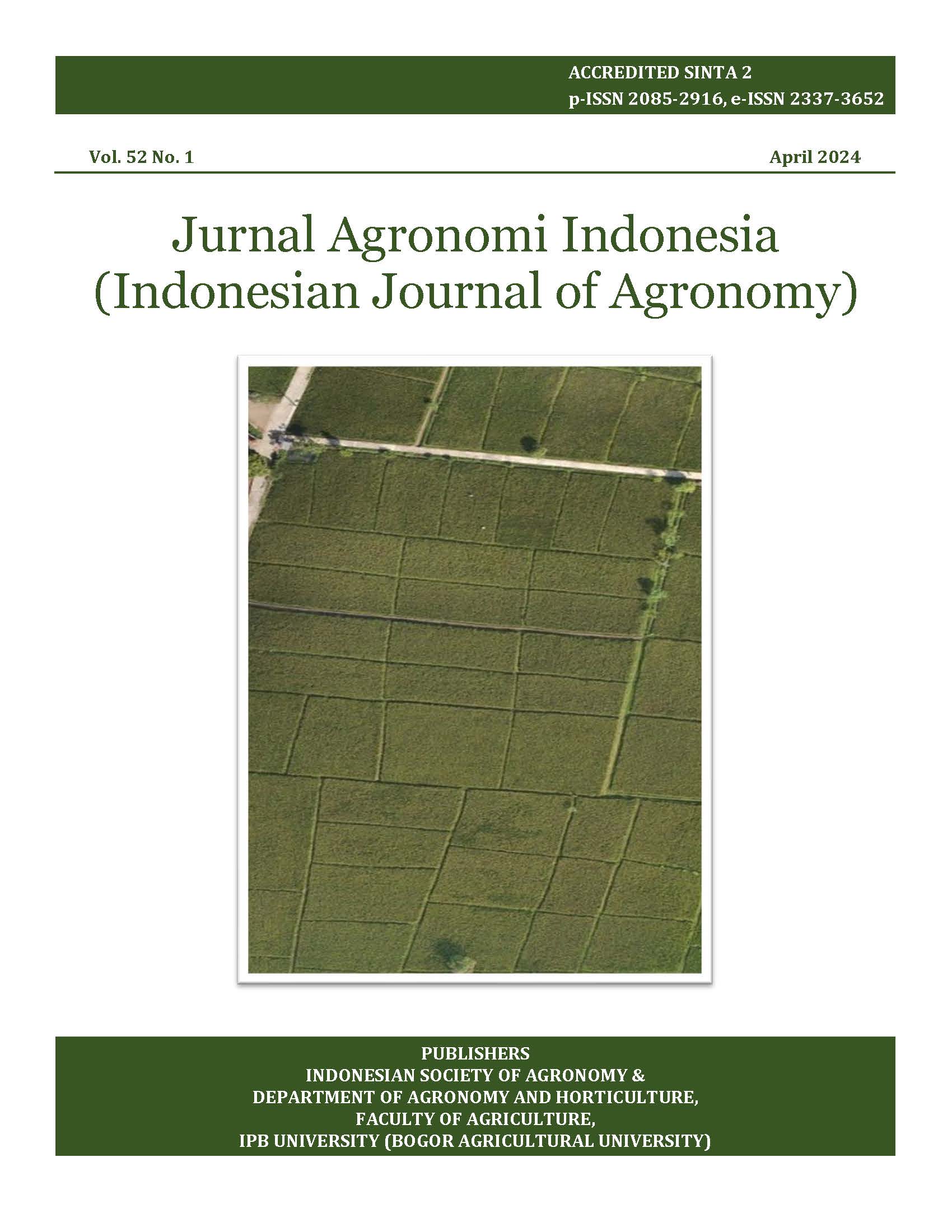Trichoderma spp. isolates stimulate rice seedling growth of Sertani 13 variety
DOI:
https://doi.org/10.24831/jai.v52i1.50849Abstract
Trichoderma has become one of the most studied filamentous fungi to be used as a greener and more sustainable solution for improving the production and growth of numerous crops, due to its capability to form symbiotic associations with plants. This study aimed to evaluate the effect of Trichoderma isolates obtained from the rhizosphere of organic rice fields in Sukabumi, Indonesia, in enhancing rice germination and seedling growth. A laboratory experiment used a completely randomized design consisting of seed treatments of 21 Trichoderma isolates (T1-T21) and a control treatment without Trichoderma (C). The inoculation was employed to elucidate any potential effects of Trichoderma isolates. Results showed that five isolates, i.e., T5, T7, T9, T10, and T14 stimulated the highest seedling vigor index, root and shoot length, and fresh weight and dry weight. These findings exhibited the potential of these five isolates as plant growth-promoting fungi to improve rice seedling growth and contribute to our understanding of the role of symbiotic fungi in sustainable rice crop production.
Keywords: plant growth promoting fungi; seed treatment; plant-microbe interactions, symbiotic fungi













